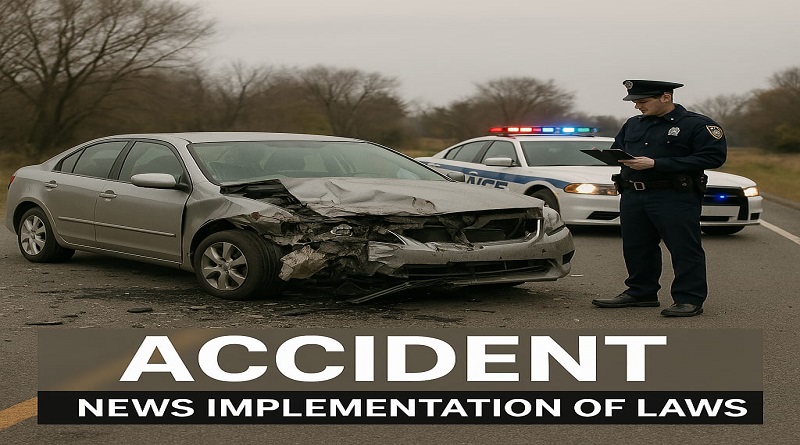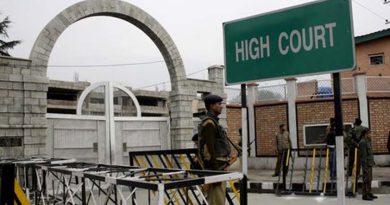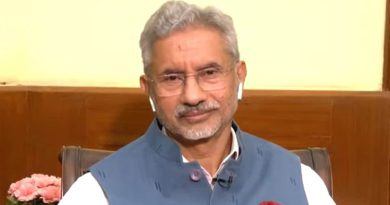MACT Claims:- Under the Motor Vehicle Act, the BNS 2023 has introduced harsher penalties for repeat offenders, aiming to deter reckless driving and reduce accidents.
🚗 The Story of Road Rules: How They Keep Us Safe 🚦
Imagine driving down a busy road, with cars zooming by, people crossing streets, and traffic lights changing. Behind all this hustle, there’s something that keeps things in order—road rules. These rules are like the invisible hands that guide us, ensuring everyone stays safe. Here’s a simple story about how these rules came to be and why they matter.
The Beginning of Road Rules
Long ago, in 1939, India introduced the first version of the Motor Vehicles Act. It was like the first rulebook for driving and road safety. But as time passed, cars became faster, technology advanced, and traffic grew more chaotic. So, in 1988, a new rulebook was introduced—the Motor Vehicles Act, 1988.
This updated law was designed to handle new types of vehicles, smarter traffic signals, and even electric cars. It wasn’t just about making laws; it was about keeping roads safe for everyone.
Getting Your License: The First Step
Meet Arjun, a young man excited to start driving. But before he could hit the road, he had to get his driving license—his official permission to drive.
- Permanent licenses are for people 18 and older, while learner’s permits are for those 16 and above to practice safely.
- Arjun learned that without a valid license, driving is illegal.
But driving isn’t just about having a license. Arjun also had to make sure his car was properly registered and that he followed speed limits to stay safe.
The Importance of Insurance
One day, Arjun’s friend Meera had a minor accident. Luckily, she had third-party insurance, which helped cover the damages.
- The law requires every driver to have insurance to protect themselves and others in case of accidents.
- If someone doesn’t have insurance, they’ll face heavy fines, and the car owner will be held responsible for any damage.
Arjun realized that insurance is more than just a paper—it’s a safety net for unexpected situations.
The Danger of Drunk Driving
One evening, Arjun saw a car driving dangerously, swerving all over the road. The driver was clearly drunk.
- The law is strict: drunk driving is illegal with a blood alcohol limit of 30mg per 100ml.
- The penalties are serious—immediate suspension of the driving license, heavy fines, and even jail time for repeat offenders.
Fines and Penalties: The Wake-Up Call
Arjun’s friend Ravi thought he could break the rules without consequences. He drove without a helmet, used his phone while driving, and didn’t have insurance. But the law caught up with him quickly.
- Driving without a license? ₹5,000 fine.
- Drunk driving? ₹10,000 fine for the first offense, ₹15,000 plus jail for repeat offenders.
- No seatbelt? ₹1,000 fine.
- Using a phone while driving? ₹5,000 fine.
- No helmet? ₹500 fine.
- No insurance? ₹2,000 fine for the first offense, ₹4,000 for repeat offenders.
Ravi’s fines added up fast, teaching him that rules aren’t just words—they’re lessons in responsibility.
New Rules for Safer Roads
As the years passed, roads became busier, and the government updated the rules to make driving even safer.
- Higher fines were introduced for serious violations to discourage bad behaviour.
- Seatbelt laws became stricter—no more skipping them.
- Pedestrian safety measures were put in place to protect people crossing the road.
- Good Samaritans who helped accident victims were given legal protection.
- The introduction of the E-challan system made it easier to track and punish rule-breakers digitally.
Arjun felt proud to see that the roads were becoming safer. The rules weren’t just about punishment—they were about building a culture of care and safety.
The Lesson We All Learn
As Arjun grew older, he often looked back at his driving days. He realized that road rules weren’t just about fines or laws—they were the invisible lines that kept society connected.
Driving was more than just getting from point A to B. It was about respecting lives, following rules, and making sure everyone reached their destination safely.
And that’s the story of the roads—a journey of safety, responsibility, and care. 🚗✨
🚨 Hit-and-Run Cases: New Legal Changes You Should Know 🚗
Imagine a busy road where a car suddenly hits a pedestrian and speeds away without stopping. In the past, such incidents often went unpunished, leaving victims without justice. But now, the law has changed to ensure that drivers take responsibility for their actions. Let’s explore the new rules that aim to make our roads safer.
The Old Rules: A System That Needed an Upgrade
Before the changes, the Motor Vehicles Act of 1988 was the main law dealing with road accidents. It had a basic rule: if a driver hit someone and couldn’t identify the vehicle, there was a fixed compensation—₹25,000 for death and ₹12,500 for serious injuries.
However, the law wasn’t strong enough to stop reckless driving. Many drivers didn’t feel the need to stop after an accident because the consequences were mild.
The New Law: A Tougher Approach (Bhartiya Nyaya Sanhita, 2023)
In 2023, India introduced the Bhartiya Nyaya Sanhita, replacing the old laws with much stricter rules. The goal is simple: make drivers accountable.
- If the driver reports the accident:
They can face up to 5 years in jail and a fine (Section 106(1)). - If the driver flees the scene:
The punishment is even harsher—up to 10 years in jail and a fine (Section 106(2)).
This change sends a clear message: “If you hit someone, you can’t just drive away.”
Why the Change Was Necessary
India has one of the highest rates of road accidents in the world. Many hit-and-run cases go unpunished, which only encourages more reckless driving.
- Road accidents are common and often deadly.
- Hit-and-run drivers felt little fear of getting caught.
- The new law aims to hold drivers accountable and protect victims.
The government realized that the old penalties were too soft to make a real difference.
The Big Picture: What This Means for Road Safety
The new law isn’t just about punishment; it’s about making our roads safer.
- Stronger penalties will discourage hit-and-run incidents.
- Drivers will think twice before fleeing the scene of an accident.
- Victims will have a better chance of getting justice.
However, the government has delayed full implementation of the law to discuss concerns from different groups. The goal is to make sure the law works fairly for everyone.
The Final Word
With these changes, India is taking a bold step towards safer roads. The message is clear: “If you’re responsible for an accident, you can’t just run away.”
The law is here to protect lives, hold drivers accountable, and make sure that justice is served—not just for the victims, but for the safety of everyone on the road. 🚗✨
Compensation for Car Accident Victims
When someone is hurt or loses their life in a car accident, they are entitled to compensation. This money helps cover medical costs, lost wages, and other damages.
- The Motor Vehicles Act of 1988 ensures that victims have the right to claim compensation for injuries or death.
- The exact amount isn’t fixed by law; instead, courts decide based on the severity of the injuries and losses.
- “Loss of consortium” means compensation for emotional harm to family members, not just spouses. This includes children, parents, and other close relatives.
For hit-and-run cases, there are specific rules:
- Death: At least ₹2,00,000 compensation.
- Serious Injury: At least ₹50,000 compensation.
If the accident was caused by a vehicle, the owner or the insurance company must pay:
- ₹5,00,000 for death.
- ₹2,50,000 for serious injuries.
Who’s at Fault? Determining Negligence
Not all accidents are the same. Some are caused by negligence, which means careless actions that lead to harm. Here’s how the law looks at it:
- Negligence can be something a driver does wrong (like speeding) or something they fail to do (like not yielding to traffic).
- Examples of negligence: Running red lights, texting while driving, or driving under the influence.
Accidents vs. Negligence:
- Accidents can happen without anyone being at fault.
- But most accidents have some form of negligence involved.
How is Negligence Proved in Court?
The injured person (the plaintiff) must show:
- The other driver had a duty to drive carefully.
- The driver didn’t meet that duty.
- This mistake caused the accident.
- The injured person suffered real losses (like medical bills or lost wages).
Evidence needed includes:
- Police reports
- Photos from the accident scene
- Witness statements
- Medical records
Legal Responsibilities of Drivers
Drivers must follow basic rules to stay safe:
- Drive at a safe speed
- Pay attention to the road
- Keep the vehicle in good condition
- Follow traffic laws
If a driver breaks these rules and causes an accident, they can be held legally responsible.
Defending Against Negligence Claims
Sometimes, the driver who caused the accident might argue that the injured person was also at fault. This is called “comparative negligence”:
- If both parties are partly responsible, the compensation may be shared.
- In some places, “contributory negligence” applies, where if you’re even slightly at fault, you can’t get compensation at all.
The Bhartiya Nyaya Sanhita (BNS), 2023: Tougher Penalties for Negligent Driving
The Bhartiya Nyaya Sanhita (BNS), 2023 introduced stricter punishments for reckless drivers.
- Section 106(1):
If someone causes death through negligence, they can face up to 5 years in prison and a fine.- If the offender is a doctor or medical professional, the punishment is up to 2 years in prison.
- This is a cognizable crime, meaning the police can investigate it without permission, and it’s bailable, which means the person can get bail.
- Section 106(2):
If someone causes death by reckless driving and fleeing the scene (hit-and-run), they can face up to 10 years in prison and a fine.- This is non-bailable, meaning the person cannot get bail easily.
🚨 Recent Motor Vehicle Accident Cases: Lessons from Tragedies 🚗
Road accidents are more than just statistics—they’re real lives affected, families shattered, and lessons to be learned. Here’s a look at some of the recent, high-profile cases that highlight the dangers of reckless driving, drunk driving, and the legal battles that follow.
1. The Pune Porsche Crash (2024): A Tragic Reminder of Underage Recklessness
In Pune, a 17-year-old driver took a Porsche for a spin, drunk and speeding. The car, unregistered, became a deadly machine as it crashed, killing two innocent people. This case is a harsh reminder of the dangers of underage drinking and reckless driving.
Key Takeaway:
- Drunk driving knows no age limits, and the consequences are devastating.
2. The Vadodara Accident (2024): When Denial Meets Reality
In Vadodara, a 20-year-old driver crashed into several people, killing one. The driver claimed that an airbag blocked his view, not acknowledging any intoxication. However, the police are digging deeper, investigating both intoxication and the possibility of another person being involved.
Key Takeaway:
- Denial doesn’t erase the truth. Law enforcement uses evidence to uncover the real story.
3. The Salman Khan Hit-and-Run Case (2002): A High-Profile Legal Battle
One of India’s most talked-about cases involved actor Salman Khan, who was accused of causing a fatal hit-and-run accident while allegedly drunk. Despite the initial conviction, it was overturned due to a lack of solid evidence.
Key Takeaway:
- High-profile cases often face legal hurdles, but proof is key—without it, justice can be elusive.
4. The Delhi E-Rickshaw Incident (2025): Drunk Driving Across All Vehicles
In Delhi, an e-rickshaw driver, drunk, ran over a young girl and injured another. The driver was arrested, highlighting that drunk driving isn’t limited to cars—it’s a danger across all types of vehicles.
Key Takeaway:
- No vehicle is safe from the risks of drunk driving, whether it’s a car, bike, or rickshaw.
5. The Audi Accident Near Bhikaji Cama Place (2025): Hit-and-Run Caught on Camera
An Audi collided with an Ertiga, causing a fatal accident. The Audi driver fled the scene, but police are using CCTV footage to track them down. The case is being investigated under Section 106 of the Bhartiya Nyaya Sanhita (BNS), which deals with negligent driving and hit-and-run cases.
Key Takeaway:
- Technology is a powerful tool in solving hit-and-run cases, helping bring offenders to justice faster.
Key Themes Across These Cases
- Stricter Penalties Under the BNS:
The Bhartiya Nyaya Sanhita has introduced harsher punishments, especially for hit-and-run cases. - The Ongoing Issue of Drunk Driving:
Despite strict laws, drunk driving remains a deadly issue. - Proving Negligence and Intoxication:
Legal battles can be complex, requiring strong evidence to prove guilt. - The Role of Technology:
CCTV footage and digital evidence are changing the game in accident investigations. - The Government’s Commitment to Road Safety:
Increased penalties and stricter laws reflect the government’s push to reduce road fatalities.
The Final Word
These tragic cases remind us of the importance of responsibility on the road. Whether it’s avoiding drunk driving, following traffic rules, or staying calm in an accident, every decision can save a life.
Let’s hope that with tougher laws, better enforcement, and responsible driving, we can make our roads safer for everyone. 🚦
Disclaimer: The content in this article is for informational purposes only. KanoonKiBaat does not intend to defame, harm, or cause damages to any individual, organization, or entity. KanoonKiBaat is not responsible for any claims, damages, or legal actions arising from the use of this information. KanoonKiBaat will not be held liable for any consequences resulting from the use of this content.
Always seek professional legal advice before making any decisions based on this information.





